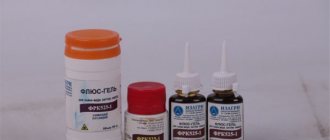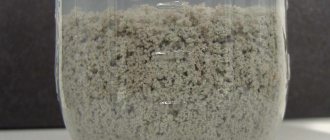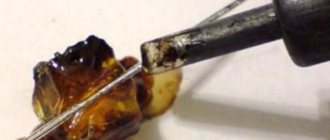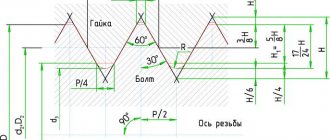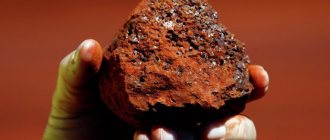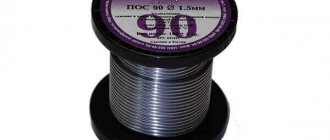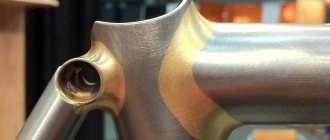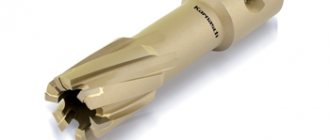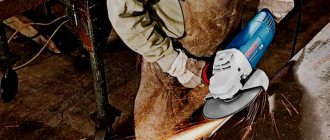What you need to know about flux
Flux is a substance that facilitates the soldering process. It removes oxides before soldering parts and during tinning. Due to high soldering temperatures, the oxidation reaction will accelerate and the oxide layer will appear faster on the soldered surfaces. Flux reduces this process and also wets the surface, which creates a “surface tension” effect and the solder is easier to distribute.
The choice of a soldering station, as well as the search for the necessary flux for the job, directly depends on what specific goal you are pursuing.
For example, low-budget materials are suitable for amateur radio. But for repairs it is necessary to use no-clean substances, especially when it comes to BGA soldering.
Main functions and properties
Before soldering, oxides are present on the contacts. Since the contacts are made of metal, they oxidize in the surrounding air. This chemical process occurs continuously if the metal surface is not protected from air by any layer of varnish or other insulator.
In order to reliably and efficiently solder the contacts to each other, they must first be tinned with solder. From this stage one of the main and key functions of the flux begins.
Main functions of flux:
- quick removal of oxides from contacts during soldering;
- creating surface tension when applying solder to soldering surfaces;
- additional protection of the soldered contact area from the environment (air or moisture, anti-corrosion).
Why is the correct choice of soldering flux so important? When choosing a flux, its parameters and declared properties play an important role.
Parameters and properties:
- residual effects (need to wash off flux residues or not);
- resistance (Ohm);
- working temperature;
- form of the substance (paste, liquid or solid);
- emissions during operation;
- price.
As we can see, there are a lot of these factors. For example, the shape of the flux plays an important role in the job being performed. Liquid rosin is much more practical than solid rosin if you need to solder several dozen wires. But paste-like flux wins over everyone when doing delicate work. It doesn't spread much and is easy to dose. However, you should not use such a flux for soldering wires; it is not economically profitable.
Requirements for fluxes
Since fluxes have different chemical compositions and purposes, the requirements for them may be different. For example, acid is absolutely not acceptable for no-clean fluxes. In some electronics industries, such as security systems, medical and military equipment, the main parameters are their resistance to various external factors during operation. And the quality of soldering is one of the factors of device reliability. Especially when it comes to SMD components and BGA chips.
Classification by type
Since the scope of application of soldering flux is quite large, they differ in their composition. Both the price and emissions during soldering depend on the chemical composition.
Active
Active fluxes include those fluxes that contain acid. The acid perfectly removes oxides and is very convenient for soldering and tinning various metal contacts. When soldering with acid, it is necessary to create the most ventilated conditions because During the evaporation process, toxic waste is released, and it primarily affects not only the respiratory system, but also the mucous membranes. In addition, you need to be very careful when applying acid to the soldering area and not allow it to come into contact with the skin or mucous membranes. 100% need to clean the soldering area.
The acid reacts with the soldering joint at room temperature. Therefore, after a short period of time, microcracks will form at the soldering site, which will then oxidize. At the same time, the contact resistance will increase, and eventually complete destruction of the soldering will occur. In addition, acid is a very good conductor (since it contains water). If you do not remove it between the row between two tracks, this is a guaranteed short circuit.
In most cases of repair and amateur radio practice, the use of soldering acid is not justified. Many radio amateurs teach beginners how to solder with acid, and this is a fatal mistake. Yes, it is easier to solder with it, but this is a last resort. Soldering acid should only be used as a last resort. These include strong oxides (consequences of moisture, and by the way, in this case you can use activated flux) or soldering of different metals.
Acid fluxes are not recommended to be applied to the board with metal tools because they can become damaged over time due to acid action. The same applies to the soldering iron tip. Excessive acid soldering can damage the soldering iron tip.
Acid-free
Acid-free fluxes include neutral fluxes. Such substances do not react with the soldering site immediately upon application. They do not corrode soldered joints. In terms of price, these are the most affordable substances.
Anti-corrosion
Reduce possible corrosion of metals after soldering.
Protective fluxes
This type of flux allows you to protect the board from the environment and prevents oxidation of the contacts during operation of the electronic device.
Activated
This type includes substances that clean the solder joint. They do not require rinsing, but it is advisable to remove their remains after soldering.
Prevention - expert advice
We figured out what to do if your cheek is swollen, and how to remove acute pathological manifestations before visiting a doctor. But it is much easier to prevent any disease than to treat it later. To prevent a purulent lump from appearing on your gum, you must follow the recommendations below:
- get into the habit of brushing your teeth at least twice a day, and even better - after every meal,
- if it is not possible to clean every time after a meal, you should thoroughly rinse your mouth with plain water or a special antiseptic, and also use dental floss,
- it makes sense to purchase an irrigator - a portable device that supplies a high-pressure stream of water and air to more effectively clean hard-to-reach places,
- you need to monitor the condition of the gum tissues, prevent their damage and bleeding,
- If you notice the first signs of caries, you should immediately see a doctor.
Don’t forget to visit your dentist’s office every six months to undergo preventive examinations and professional cleaning procedures to remove plaque and deposits. To protect yourself from dental problems, you will have to reconsider your usual diet - limit the consumption of sweets, starchy foods and carbonated drinks with dyes. Eat more fruits and vegetables, as well as foods high in calcium and fluoride.
According to condition
Fluxes come in different shapes and conditions. There are solid, liquid and paste-like. In general, they differ almost completely in their parameters and properties.
Liquid
Liquid fluxes already have better properties compared to solid ones. They are much easier to apply and significantly reduce soldering time.
The disadvantage is that it dries quickly in the open air; if such a composition is spilled on the surface, it will be difficult to wipe it off. This type includes, for example, liquid rosin. It is usually sold in jars with a brush.
If you use liquid rosin, do not apply it to a hot surface with a brush.
Due to high temperature, the brush may become deformed and cannot be returned to its previous state.
By the way, after purchasing in a store, immediately check that the lid is tightly closed, otherwise it may spill. In stores, sometimes the lids are not closed tightly so that the rosin does not dry to the bottle.
Solid
The hard ones include the most common rosin and solder fat. The advantage of such fluxes is the price. By the way, aspirin tablets are also quite a solid gumboil.
The disadvantage is the inconvenience of application (first on a soldering iron, then on the soldering site, etc.), some types of soldering are not available, poor removal of oxides before and during soldering, extremely low surface tension effect, many marks on the work site and a large amount of fumes when soldering.
Active fat is classified as solid because it cannot be applied with a brush as effectively as liquid rosin. In addition, fat still has a denser structure.
Pasty
Liquid and solid fluxes are not recommended for use in BGA soldering. They boil hot, and there are paste fluxes for surface mounting.
Paste fluxes are the best types available. For example, they are very convenient to apply. They do not dry out in the air, have excellent soldering properties (depending, of course, on the price) and all types of soldering are possible. The only disadvantages include the fact that there are many fakes of famous manufacturers on sale (however, some fakes are close in level to the standard), harmful fumes and, of course, the price.
Fluxes that are too cheap are terribly solderable. Another indisputable advantage of paste is that you can use syringes with thin needles (the sharp tip of the needle must be cut off), thereby very accurately dosing a portion of the flux, and without smearing it all over the board. In addition, they are easy to wash and some of them can not be washed off at all (which are used in BGA soldering, where cleaning is, in principle, very difficult).
The best way to apply paste flux is with a syringe. You can accurately and economically dose the flux using a syringe. A simple pharmaceutical syringe is enough, we cut off the sharp part of the needle and you can freely make the length of the dispenser as convenient for you. In addition, a metal needle does not deform from high temperature as much as a brush, and you can safely add flux during the soldering process.
Convenient application of paste-like flux is another plus in the collection of advantages of paste-like substances.
There are also so-called flux guns, but they are much larger and are not very convenient for micro-soldering. And if you do not plan to solder boards on an industrial scale every day, then you do not need flux guns.
You can solder wires, DIP radio components and contacts with paste fluxes, but this is not very economical. If you need to solder a lot of wires, then the most common liquid rosin will do.
By the way, fluxes are found in many solders and soldering pastes.
It is easier and faster to work with such solder.
What forms of pathology are there?
Next, we will look at how to get rid of a painful lump on the gum and what helps in treating the pathology, but first we will dwell on the generally accepted classification of the disease. So, experts distinguish between acute and chronic periostitis. In the first case, the patient suffers from severe clinical manifestations - high fever, acute pain. When the flux develops into a chronic form, the pain becomes aching, and the temperature does not rise above 38.5 degrees. Also in dentistry, there are several types of periostitis:
- purulent type is the most common form, nicknamed gumboil in everyday life. An inflamed cavity with purulent exudate forms in the thickness of the soft tissue. The pathology develops rapidly and leads to the formation of a fistula,
The photo shows purulent periostitis - serous form - occurs in approximately 38% of cases and most often results from jaw trauma2. Symptoms include swelling of the periosteum and accumulation of fluid in the tissues,
- diffuse periostitis is a rather complex type of pathology, in which the boundaries of the inflamed focus spread in all directions, and treatment requires the participation of a maxillofacial surgeon.
The photo shows diffuse periostitis
The doctor chooses the treatment tactics, and he does this based on the type of lesion, the degree and depth of its spread, as well as other characteristics of the clinical picture. In this matter, it makes sense to completely trust a professional, and especially not to rely on self-medication.
Is it necessary to clean the boards after soldering from flux residues?
In general, it is advisable to clean the board after soldering, unless we are talking about protective fluxes. If you soldered with acid, then this is absolutely necessary.
Sometimes you even need to clean the soldering area from rosin. And not only for beauty, but also to make sure that there is no excess solder on the contacts, which could cause a short circuit on the board.
Removing residues
For cleaning the board after soldering, products such as Galosh gasoline, isopropyl alcohol, Flux Off and white spirit are excellent.
You can also use medical alcohol or vodka, but of course they clean much worse.
Cleaning can only be done in a ventilated area!
Use a small jar with a small hole (or dispenser) to store gasoline so you don't have to constantly open and close bottles. For example, you can use a hydrogen peroxide bottle.
They also sell these special bottles with different needles. They make it very convenient to dose the cleaning product.
It will be enough to tilt the container and apply a small dose of cleaning agent to the electronic board.
It is convenient to clean the board using cotton swabs, discs or a regular toothbrush.
It is not recommended to clean solder residues with water, even if the manufacturer allows it. A mixture of water and flux residues is very difficult to dry. Especially when it comes to BGA.
What can you do at home?
Treatment at home can be not only ineffective, but even dangerous. To avoid unwanted consequences, you should first consult with your dentist. The pathology does not go away on its own; in any case, medical intervention is required. And only after treatment can you resort to traditional medicine to speed up the recovery process and alleviate your condition.
Soda compress to relieve pain and swelling
This is one of the most effective ways to quickly relieve inflammation and reduce swelling. A teaspoon of sodium carbonate should be mixed with 4-5 drops of water and brought to a paste. Next, wrap the resulting substance in gauze and apply it to the swollen area for half an hour. After the time has passed, you need to rinse your mouth with a weak solution. The procedure can be repeated three times a day, and this therapy lasts about a week.
Linden decoction as an antiseptic
The decoction has a pronounced anti-inflammatory and antibacterial effect. This is also one of the most effective means of rinsing your mouth with flux. To prepare it, pour 4 spoons of linden blossom into 500 ml of boiling water and cook for 25 minutes over low heat. Next, the broth is cooled, filtered and used 3-4 times a day after meals. The duration of the course is 10 days.
Linden decoction is a good antiseptic
Alcohol tincture of calendula
You can prepare the product yourself or buy a ready-made solution at the pharmacy. Two tablespoons of dried marigolds should be poured with 200 ml of vodka, mixed thoroughly and stored in a cool place, protected from direct sunlight. The product is infused for a week, after which the tincture can be used for rinsing. To do this, dilute a tablespoon of the finished substance in a glass of water at room temperature. You can repeat the procedure 4 times a day. The course lasts on average about 10 days.
Calendula tincture will relieve pain
Sage decoction against inflammatory processes
A self-prepared decoction of sage with the addition of mint or lemon balm is another effective remedy that provides antibacterial treatment of oral tissues and also helps reduce the intensity of the secretion of purulent masses. To prepare it, you need to pour 2 teaspoons of mint and sage into 400 ml of boiling water and cook for half an hour. The resulting broth should be cooled, filtered and used for rinsing up to 6 times a day for a week.
Other traditional medicine methods
Other effective ways to relieve swelling include rinsing with chamomile decoction. To prepare the remedy, you need to take a tablespoon of crushed and dried flowers, pour a glass of boiling water and leave for 20-30 minutes. Next, the broth is filtered and used warm. The use of folk remedies is justified only if this point has been agreed upon in advance with the attending physician. In addition, home treatment can only act as supportive therapy, but not as the main method of combating the disease.
Chamomile infusion is great for rinsing
Fluxes overview
Let's look at the most popular fluxes for soldering radio components and metals.
Rosin
Rosin is the simplest flux. Some beginners get confused in definitions and separate the concepts of “flux” and “rosin”. It is the same. Rosin is a flux. Extracted from tree resin.
An all-time classic. Among the advantages are accessibility, low emissions of harmful substances and low cost.
Disadvantages: poor tinning of highly oxidized contacts and insufficient surface tension of the solder.
Rosin can be safely used for DIP soldering of radio components, wires and homemade printed circuit boards.
Another type of rosin is liquid.
It is easiest to apply it to the board. However, it has a significant drawback. It's very sticky. Try not to spill it. In addition, you should not leave the bottle without a lid for a long time.
Liquid rosin, when soldering wires, spreads well over the entire area, which much better ensures the distribution of solder during soldering.
Sold with or without a brush.
And another type of liquid rosin is FKET.
In general, this is the same rosin, only the proportions of the substances may be different.
Liquid rosin has the same uses as solid rosin, but it’s also easy to apply.
Don't even try to fill the syringe with liquid rosin. It will dry in the needle in just a couple of minutes.
They also sell so-called rosin pencils. On the one hand, they are convenient to use for soldering solar panels. On the other hand, their main disadvantage is that they leak. Such “pencils” are not recommended for purchase.
Soldering fat
It differs from rosin in composition.
Fat is softer and easier to wash off. The advantages and disadvantages in terms of soldering are generally the same as those of rosin. However, grease is much easier to remove from the board. In addition, alcohol rosin can leave marks on clothing, and its residue will stick to surfaces. But fat doesn’t have that.
It is also divided into active (contains acid) and neutral. Active can be applied with toothpicks.
The disadvantages of fat include the fact that when heated, it spreads greatly. This can cause difficulties when applying it to solder joints and parts to be soldered.
LTI-120
An example of a good activated flux.
Ideal for tinning circuit boards, parts, and even some aluminum parts. By the way, some radio amateurs solder headphones with acid due to the fact that the wires are poorly tinned. But in vain. LTI-120 copes with this perfectly.
The quality of LTI-120 greatly depends on the manufacturer.
Soldering acid
Do not use for soldering radio components. Only for soldering carbon steels, copper, nickel and their alloys. And then only in case of urgent need.
Be sure to rinse off after soldering.
Orthophosphoric acid
It is used for cleaning rust, as well as during soldering of highly oxidized compounds and metals. A last resort if all other fluxes fail.
Be sure to wash it off.
Acetylsalicylic acid
For old-school radio amateurs, aspirin served as a good flux that could be used to tin some heavily oxidized areas of soldering. Soldering with such substances is not recommended. The emissions are very toxic. In addition, thorough cleaning of the board after soldering work is mandatory.
F-38N
For soldering nichrome, constantan, beryl and aluminum bronzes. And also suitable for corrosion-resistant steels. Very highly active.
Residues of F-38N must be washed off after soldering.
Rosin-gel
Among the advantages, the following can be noted: it does not dry out, has approximately the same properties as LTI-120, and does not need to be washed off. And this gel is not expensive.
TT indicator flux gel
It is not recommended for purchase, especially if you will be repairing equipment (for example, soldering USB connectors or changing microphones).
If the flux residues do not discolor after soldering, they will destroy the contacts. Therefore, if you decide to solder with this flux, then do not forget to monitor its condition after soldering.
And it is advisable to wash it off, even though the manufacturer writes that there is no need to wash off its residue after soldering and changing color.
Flux MARTIN
An excellent option for BGA soldering. It smokes little and solders well.
Its main drawback is its huge price. There is no point in buying such a flux for beginners. When training, you will waste a lot of flux.
Domestic option for BGA - Interflux (interflux) IF 8300
Excellent quality, does not require rinsing. As in the case of MARTIN, there is the same drawback. This is a high price.
RMA-223
This is a good quality flux for SMD and BGA mounting, slightly inferior to MARTIN-y. At the same time, it has an acceptable price for both radio amateurs and service providers. .jpg” class=”aligncenter” width=”529″ height=”172″[/img] Does not require washing off residues after soldering. And most often it is faked.
Original fluxes VS fakes
Soldering flux manufacturers offer many different options for their products. The final price is determined by the substances used, manufacturer's warranties, research and testing, as well as soldering safety.
There are manufacturers that have been producing soldering fluxes for many years and selling them all over the world (for example, Amtech). And there are also fakes of such fluxes. Usually, counterfeits are sold in radio stores and online sites. Such fluxes are much cheaper than the originals. If the original costs 7,000 rubles per 100 ml, then a fake can cost 1,000 per 100 ml, or even 500. Counterfeits can be produced underground, which in turn affects the quality and safety of the finished product.
Is it dangerous to solder with fakes? Let's start with how much time you devote to soldering and what guarantees for work are needed. For example, if you are a beginner and do your own soldering for a couple of hours a week, then any paste flux will do to start with. However, you should not take very cheap fluxes. For example, with AliExpress 5 tubes at a price of 100-200 rubles is not the best choice. You will not get anything other than an incomprehensible mixture and terrible soldering quality for such a price.
If you think that soldering with expensive fluxes is absolutely safe, then this is far from entirely true.
Some fluxes contain various activators, which, if they come into contact with mucous membranes, inside the body, or with excessive soldering in an unventilated area, can cause irreparable harm to health. Therefore, when soldering, do not forget to ventilate the room and take breaks. The difference from fakes is that the manufacturer writes the true composition of their products. You can at least be sure of what exactly is included in the flux. It is very difficult to check the composition of a fake on your own, since the available information cannot be reliable. Review article on fake soldering fluxes on Habré.
Good fake RMA-223
This version of flux was purchased at a specialized store for repairing mobile equipment.
In general, it solders both SMD and BGA parts well. There are no pungent odors or heavy smoke from it during soldering.
Bad fake RMA-223 from AliExpress
On AliExpress they often sell these tubes with supposedly RMA-223. And the price is usually no more than a few dollars for 4 tubes.
This is a disgusting copy. It collects solder poorly, smokes and has an incomprehensible composition. Compared to this flux, even ordinary solder fat looks like a high-quality material for BGA and SMD soldering (although it is almost unsuitable for this).
For comparison, photos of different “copies” of RMA-223.
At a minimum, the tube formats, their names and colors are visually different, not to mention the quality of soldering. Don't buy cheap knockoffs that cost less than $4. They do not wet the solder well and smoke a lot.
How to make your own flux
There are many recipes on the Internet for preparing a homemade version of flux, but in any case, all of them are inferior to their factory counterparts in all respects, including price.
Examples of using fluxes and soldering PIC solder of various metals
A variety of fluxes is available due to different soldering requirements and temperatures. Some metals require a different approach to soldering and tinning. Soldering can be either low-temperature or high-temperature.
Black metals
Such metals are usually soldered using zinc chloride or ammonium chloride.
Soldering electrical equipment (DIP, BGA, SMD, boards and wires)
As mentioned on the page above, the main requirements for fluxes when soldering electronics and electrical equipment are low leakage current and lack of corrosive activity. Rosin, solder fat, LTI-120, FECT, RMA-223, etc.
Aluminum alloys
Aluminum can be easily soldered with both rosin and LTI-120, but this is in cases of small contacts. If the soldering surface is too large, it is better to use acid-based fluxes. For example, it could be orthophosphoric acid.
Stainless steel
Phosphoric acid can also be used for soldering stainless steel.
Fluxes for high temperature soldering
For higher temperature soldering (about 800-1150ºC) boric acid, borax and similar impurities are suitable. The solder used is usually copper-zinc and silver.
Soldering borax
In eighth place is Borax , also known as sodium tetraborate, which is a salt of boric acid in the form. Borax is often mixed with boric acid and water to create a liquid active flux.
Advantages:
It is used at high temperatures of 700 - 900 degrees, that is, it can be soldered with a torch.
Flaws:
This active flux must be washed off.
What to solder: gold, silver, copper, brass, cast iron, steel.
How to wash it off: remove it mechanically or this way: boron flux is washed off with citric acid - citric acid is washed off with water - water is washed away well with alcohol.
How to choose the right flux
For example, the most common rosin is perfect for beginning electronics engineers. It is cheap, not so toxic, and will help you acquire the basics of the craft. Also suitable for soldering wires, especially if you need to solder more than a dozen. Liquid rosin is easy to apply to multi-core wires. It completely envelops the soldered contacts.
For radio amateurs and novice electronics engineers, you can try liquid rosin and paste flux RMA233. Optionally, you can add LTI-120 to this as a strengthened version of rosin.
However, if you already have a soldering station (and this, as a rule, includes a soldering iron and a hair dryer), then you need to try more professional fluxes.
Also, if you need to solder a lot of wires and DIP contacts, then liquid rosin or FKET is a very good choice. During soldering, you control the process and if something is not soldered, you can apply flux again and go through it with a soldering iron. The low price, nature of the work and mass production leave no competition for other fluxes.
If soldering is difficult, then evaluate the place of soldering and the cross-section of the wires. It is quite possible that the power of your soldering iron is not enough to warm up. (power is not only temperature, but also tip area).
Rosin alcohol mixtures are of little use for fine work and repairs. Yes, you can solder with them, but the quality and speed of work deteriorate greatly. In addition, the result of soldering does not look very nice. And during operation there is strong boiling.
If you decide to do repairs and SMD soldering, then it is best to use paste fluxes. For such work, RMA223 and similar ones in the price category are well suited. This flux can be used to solder radio components, connectors (soldering SIM connectors, micro USB) and cables.
For BGA soldering, the flux requirements are much higher than others.
The specifics of soldering are very complex. It takes more time, skills and money. You will not be able to check the soldering result visually. The only way is to test the work. And since you cannot visually control the result of the work, it is easier to predict the warranty period using coffee grounds. Of course, you can “see” the result of soldering using X-rays, but this is already industrial equipment.
In addition, it is very difficult to remove flux residues from the soldering area. You can try using an ultrasonic bath, but if you do not completely dry the board with hot air, then it is unknown how the cleaning agent (gasoline or isopropyl) mixed with solder residues will behave in a small air space. Therefore, one of the main requirements for fluxes for these works is that there is no need to clean the soldering area and there is no electrical resistance.
And it will be difficult to understand what exactly caused the repeated failure - the chip itself, another malfunction, mechanical damage, or the quality of the solder.
Therefore, it is best to purchase fluxes with good reviews for such work. Yes, such fluxes can cost 2000 or 8000 per 100 ml and even 50 ml, but this is the price for high quality and a guarantee from the manufacturer. For example, MARTIN flux or Interflux fluxes. Of course, such expensive fluxes are not worth soldering wires or simple structures or repairs. These products eliminate poor soldering, resistance and corrosion from the long list of potential repeat failures.
Flux - reasons for the formation of a purulent lump on the gum and methods of treatment
Flux rightfully takes its place among the most unpleasant and painful pathological phenomena encountered in dental practice. The periodontal tissue and periosteum become inflamed, which leads to the rapid development of periostitis - this is what gumboil is called in medical terminology. Among the obvious signs of the disease are severe swelling of the gum tissue, their redness and the formation of a purulent lump. Often, against the background of a pathological process, the temperature rises and general health worsens. Later in this article we will talk about what gumboil is and how to treat it.
Safety
When working with soldering fluxes, do not apply them with your hands without gloves. These substances contain toxic chemical components, especially acidic materials. Also, when soldering, you must maintain a distance and do not breathe fumes from the flux. Strictly prevent flux from getting on mucous membranes or inside the body. This also applies to emissions. After work, you need to wash your face, because flux vapors can leave microelements on the surface of the skin. You cannot eat while soldering. It is advisable to have a hood with a carbon filter and a ventilated room.
When soldering is not on an industrial scale, a couple of hours a week is enough in a well-ventilated room. Take short breaks while working. If you haven't soldered in a while or are trying this craft for the first time and feel a little dizzy after a few hours, this is normal for your first experience. However, if a sharp deterioration in your health begins, seek help immediately.
What is a pathological process
The development of inflammation of the periosteum most often occurs due to tissue infection through the root canals and periapical area. As a result, the patient gradually develops severe swelling of the mucous membrane in the area of inflammation. The gums turn red, increase in volume, a characteristic lump and painful sensations appear, and the cheek swells. You can see how this looks in practice by looking at the photo below.
This is what gumboil looks like
An infection can trigger the process, for example, from a carious cavity through the pulp chamber and tissue adjacent to the root. Flux of odontogenic etiology usually results from the active activity of staphylococci, streptococci and other pathogenic microorganisms1. The situation requires immediate medical attention, because otherwise the patient risks experiencing severe piercing pain and even more serious complications.
Storage
It is best to store fluxes in a dark room out of direct sunlight. For example, you can use a small box. Also, each container must be isolated from each other. Temperature storage conditions are on average room temperature - about 20-25 degrees. And of course, children should not have access to such substances.
Bottles with liquid fluxes must be tightly closed to prevent anything from drying out. But not “tightly”, so that the cap does not stick to the bottle.
It should not be stored in too cold a place. Each manufacturer writes specific storage conditions on the labels, so they may differ by a couple of degrees due to the specific composition.
Best before date
Also, do not forget about the shelf life of fluxes. The flux may lose its properties after its expiration date (it will become drier, in the case of a paste-like flux, or less effective in removing oxides, in the case of an activated flux).
Characteristic symptoms
Before moving on to the question of what to do with a swollen cheek and how to cure gumboil in general, you need to consider the accompanying symptoms. The intensity of pathological manifestations largely depends on the patient’s age, the state of his immune system and the structural features of the jaw apparatus. So, for example, the disease develops much faster in a child than in an adult. The same goes for a weakened immune system. If we are talking about exactly how a tooth hurts during gumboil, then it is quite difficult to give an unambiguous description of the symptom - the pain can take on a different character, but over time it becomes aching and constant, with periodic pulsation.
Thus, the main symptomatic manifestations characteristic of periostitis include the following phenomena and conditions:
- pulsation occurs against the background of the beginning of the formation of purulent masses,
- a pronounced lump filled with pus appears on the gum,
- a person loses the ability to open his mouth normally if swelling has formed in the corner of the lower jaw,
- the patient begins to experience severe discomfort while eating and talking,
- swelling of the mucous membrane appears in the area of purulent infiltration,
- painful sensations occur due to mechanical impact on inflamed tissues,
- the general condition worsens, the temperature rises, the patient experiences weakness and dizziness.
A dull, nagging pain in the tooth that can become pulsating.
It should be noted that with the serous form of the disease, the clinical manifestations are less pronounced, which cannot be said about purulent flux. In any case, if characteristic symptoms appear, you should immediately see a dentist.

